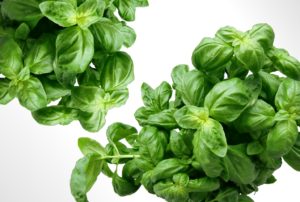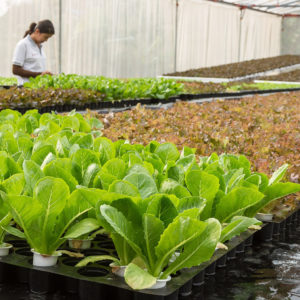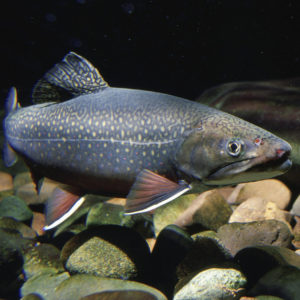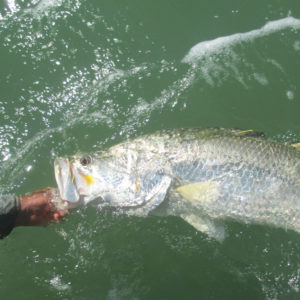What Kinds of Fish Can You Grow in Aquaponics?
Aquaponics is a type of agriculture that combines both hydroponics and aquaculture. Fish grow in a tank and plants grow simultaneously, feeding on the nutrients produced from fish waste. It’s a highly efficient system that allows you to harvest two different products. When you start learning about aquaponics, one of the first questions is what kinds of fish can you grow in aquaponics?
Next, we’ll look at what kinds of fish can be grown in aquaponics, and where you should start.
Types of Fish for Aquaponics
It may surprise you to learn that there are a great many types of fish that you can raise in an aquaponic system. Moreover, not all of these fish have to be grown for food. In fact, there’s even a market for growing ornamental fish in an aquaponic system. With that said, most people do grow fish for food, rather than as a hobby.
Commercially, tilapia and bluegill are some of the most common choices. However, if you have the right system, the options are virtually endless.
Some other common choices include:
- Carp
- Catfish
- Bluegill
- Tilapia
- Crappie
- Perch
- Bass
- Crayfish
- Shrimp
- Trout
- Sunfish
- Koi
How to Choose the Right Fish
When you’re trying to choose which fish to grow in aquaponics, you need to consider several factors. Much like plants, not all fish are suited to the same types of environments and conditions. Some fish are much more sensitive, and require a lot more oversight. Others are fairly hardy and easy to care for.
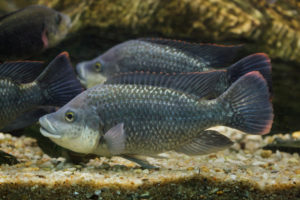
Consider these factors when choosing which fish to raise:
- Available space and tank size
- Temperature needs
- Ideal pH range
- The plants you plan on growing
- Dietary needs
- Aggression level
- Time to grow to plate size
- Local regulations (some areas prohibit certain species as they are considered invasive)
Recommended Fish for Aquaponics
It’s common for growers to spend a lot of time weighing their options with all the different factors to consider, especially in the beginning. However, if you want a quick place to start, we’ll review some of the fish we recommend for aquaponics.
Catfish
Catfish are a common choice for aquaponics, and a popular meal around the world. These are some of the easier fish to grow, especially when you’re starting out with aquaponics. Catfish are known to be quite hardy, and can survive in changing conditions (including temperature, dissolved oxygen, and ammonia spikes). Another benefit of choosing catfish is that they’re not picky eaters, and will eat many different types of food. However, they won’t try to eat other fish in your tank as long as the other fish are around equal size. Because they’re bottom feeders, they can also help keep organic material from piling up in your tank.
Catfish are also considered ‘armored’ fish, because they have plates rather than scales. While this does make them hardy to many different conditions, it also means they have some other sensitivities. Should you need to treat your tank for any kind of pathogen, you’ll need products that are safe for armored fish.
The basics:
- Ideal temperature is between 75-85 degrees
- pH from 7-8
- Grow fairly quickly
- Require protein rich diets
- Hardy to changing environments
- Need proper handling as they do not have scales
- Bottom feeding habits
- Tolerate higher stocking capacity
Trout
Trout are another popular fish for eating, and they’re also easy to raise in an aquaponic system. These fish prefer a cooler environment, so you don’t have to worry about too much heating equipment. In fact, they grow well in outdoor aquaponic systems even if you live in a cooler area. While they do grow more slowly than some species, they can tolerate more salinity in their water, making them even hardier. However, it’s not advised to raise trout with other fish as they often become aggressive and feed on other species.
The basics:
- Included in the salmon family
- Prefer cool temperatures – 56-68 degrees
- Often reach 1lb once fully grown
- Slower growth rate
- Tolerate more salinity and can survive in brackish water
- Carnivorous, and better grown away from other species
- More sensitive to changes in pH
- Minimum DO should be 10mg/liter
- Ideal in outdoor and indoor systems
Tilapia
Tilapia are one of the most popular fish for consumption, as well as for growing in aquaponics. They are ideal for beginners for many reasons. First, they’re an extremely hardy species. They stand up to parasites, disease, and poor water quality better than most other species. If you’re a beginner and figuring out how to manage your aquaponic system, this species is a great place to start. Tilapia also aren’t very picky eaters, and as they’re omnivores, they accept a wide variety of food.
Another reason tilapia is so popular in aquaponics is that they grow and reproduce quickly. Depending on what you feed them and how you raise them, they can grow to plate size within six months. What else makes them ideal? You don’t need a large system to grow tilapia. This species is equally well suited to small or medium sized systems.
The basics:
- Higher disease and parasite resistance
- Ideal for all system sizes
- Optimal pH: 6.5-9
- Ideal temperatures are between 82-86 degrees
- Fast growth- they reach maturity in 6 to 8 months
- Easy to breed
- Low DO requirements
- Varied and omnivorous diet
- Highly adaptable to changes in environment
Koi
If you’re thinking that Koi are only ornamental- you’re correct. However, that does very little to diminish their popularity. While they’re more often found in outdoor pond systems, they can be grown indoors if you provide the right conditions. Koi are hardier than most ornamental fish, and rarely have issues with disease and parasites. This is another species that isn’t too picky about what they eat, and they’ll survive off a varied diet. However, you should also consider that koi have a fairly long lifespan. This means you need to ensure your system is something you can maintain for a long time.
The basics:
- Ornamental variety (not recommended for eating)
- Fair temperature tolerance (65-78 degrees)
- Ideal pH range is between 6.5-8
- Hardy against parasites and diseases
- Longer lifespan
- Tend to create more waste as they mature (which requires more frequent cleaning)
